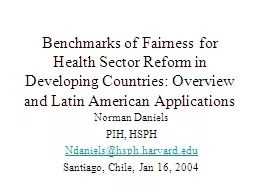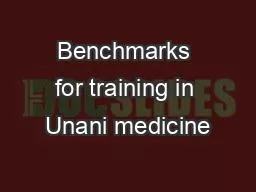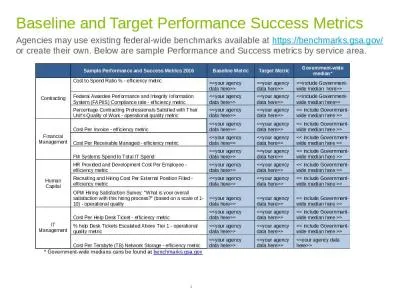PPT-Benchmarks of Fairness for Health Sector Reform in Developi
Author : pasty-toler | Published Date : 2016-02-19
Norman Daniels PIH HSPH Ndanielshsphharvardedu Santiago Chile Jan 16 2004 Historical Development of the Benchmarks 1993 Clinton Task Force 1996 Benchmarks of Fairness
Presentation Embed Code
Download Presentation
Download Presentation The PPT/PDF document "Benchmarks of Fairness for Health Sector..." is the property of its rightful owner. Permission is granted to download and print the materials on this website for personal, non-commercial use only, and to display it on your personal computer provided you do not modify the materials and that you retain all copyright notices contained in the materials. By downloading content from our website, you accept the terms of this agreement.
Benchmarks of Fairness for Health Sector Reform in Developi: Transcript
Download Rules Of Document
"Benchmarks of Fairness for Health Sector Reform in Developi"The content belongs to its owner. You may download and print it for personal use, without modification, and keep all copyright notices. By downloading, you agree to these terms.
Related Documents














